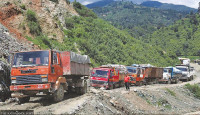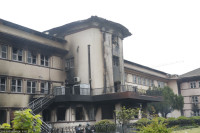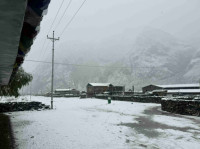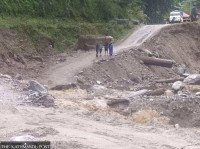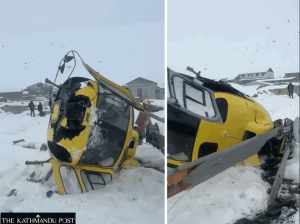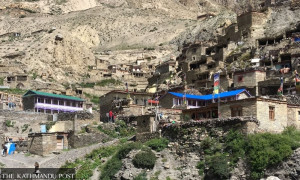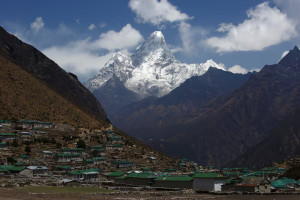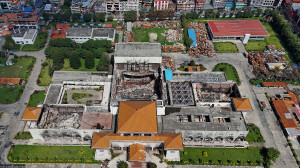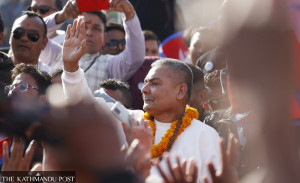National
Air ambulance plan evokes pessimism
A senior health ministry official on Thursday expressed pessimism on the plan to start air ambulance service in the country to transfer pregnant and postpartum women from rural areas to healthcare centres during emergencies.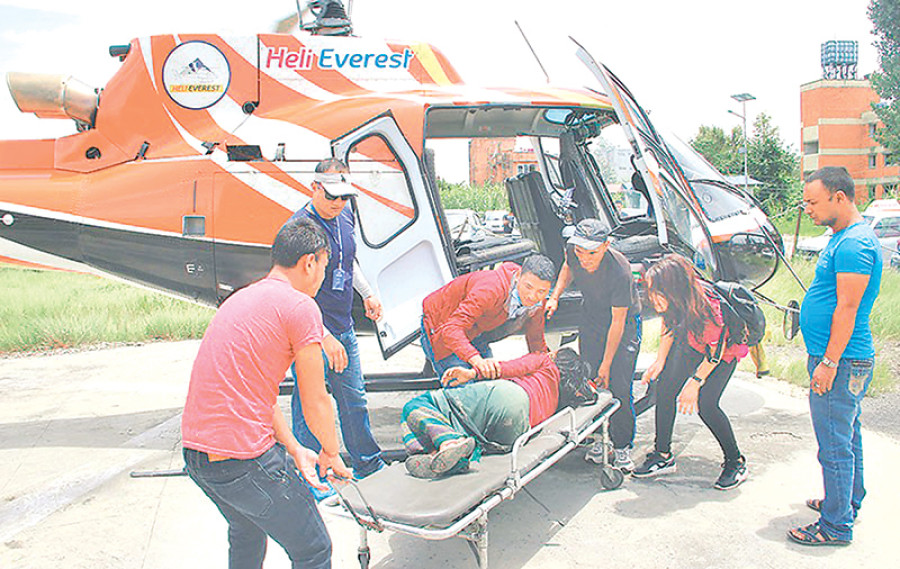
A senior health ministry official on Thursday expressed pessimism on the plan to start air ambulance service in the country to transfer pregnant and postpartum women from rural areas to healthcare centres during emergencies.
Ministry of Health’s Policy, Planning and International Co-operation Division Chief Mahendra Shrestha said buying air ambulance now might not be possible because of several constraints.
“One air ambulance would cost minimum Rs400 million for having one air ambulance. It would have to provide emergency services all day long throughout the country. This would put excessive pressure on its operations. Further, maintenance of assets would require massive budget and manpower,” said Shrestha, who is also the spokesperson of the division.
The official’s pessimism seems strange because the government backs air ambulance service because it would benefit women residing in remote rural areas that have limited access to roads.
Finance Minister Yuba Raj Khatiwada had mentioned providing air ambulance service for pregnant and post-partum women residing in rural Nepal in his speech while presenting the
annual budget for financial year 2018-19.
Although the government spoke about air ambulance in its budget, it would be difficult to implement the plan. It is still not clear whether the government would procure its own air ambulance, said Shrestha.
He sounded optimistic when he suggested the ministry could hire private air service to transfer pregnant or post-partum women from remote areas to the nearest healthcare centre.
“We could hire private air services. Acquiring an air ambulance is not impossible. The government should be able to resolve technical problems that may arise with this plan,” said Shrestha.
Health Minister Khagaraj Adhikari had first mooted the idea of air services for pregnant women living in remote rural areas in 2014 when Sushil Koirala-led government was in power.
During Adhikari’s tenure, the ministry had allocated Rs5 million to each region for hiring air services to transfer pregnant and post-partum women in need of emergency medical services.
The plan never gathered momentum as only two development regions used the money whereas funds for three other regions remained unspent. “Women living in remote places with poor access to roads and medical facilities need such air service. Often the mother and the baby’s lives are in danger,” said Adhikari.
Reducing Maternal Mortality Ratio (MMR) to below 70 per 100,000 live births and reducing preventable Infant Mortality Rate (IMR) to less than 1 percent of newborns and children are some of the major policies of the government as per Sustainable Development Goal (SDG) 2016-2030. According to Nepal Demographic and Health Survey 2016 data, MMR is 259 per 100,000 and Infant Mortality Rate (IMR) is 32 per 1,000 live births.
Poor connectivity, access and lack of good quality medical facilities have contributed to mortality rates of pregnant women and newborn babies facing emergencies in rural Nepal.
Experts have said that the use of air ambulance could significantly reduce Nepal’s MMR and IMR rates and help achieve SDG goals.
“After realising the need to allocate air ambulance in the budget, the onus will be on healthcare experts to raise difficulties they might face while providing air services. The government should respond and do the needful,” said Adhikari, highlighting role of air ambulance in combating the MMR and IMR rates.




 19.12°C Kathmandu
19.12°C Kathmandu